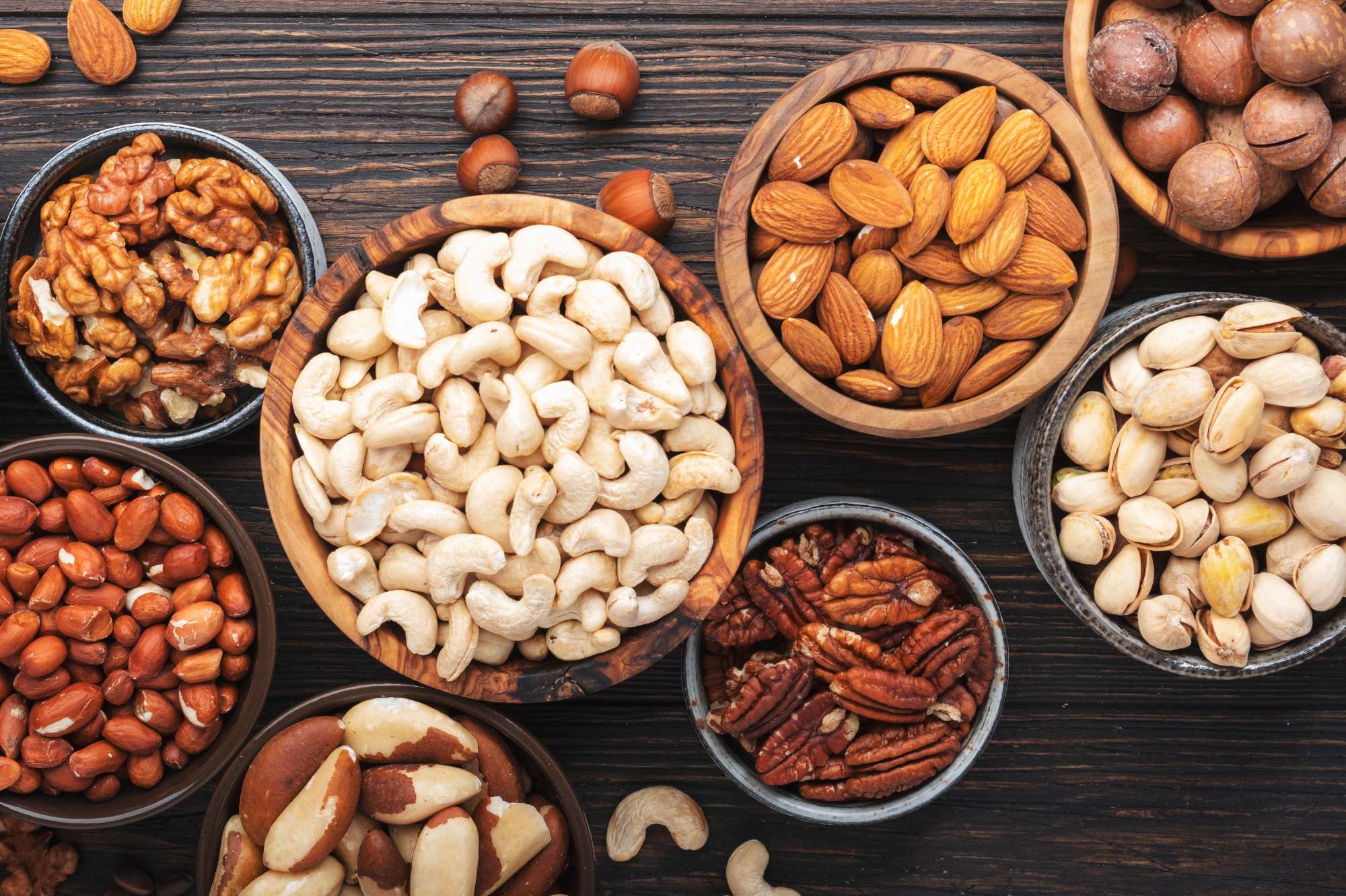Vitamin B9
Vitamin B9
Folate is the natural form of vitamin B9, water-soluble and naturally found in many foods. It is also added to foods and sold as a supplement in the form of folic acid; this form is actually better absorbed than that from food sources—85% vs. 50%, respectively.
Folate, formerly known as folacin and sometimes vitamin B9, is the generic term for naturally occurring food folates and folates in dietary supplements and fortified foods, including folic acid. Food folates are in the tetrahydrofolate (THF) form and usually have additional glutamate residues, making them polyglutamates. Folic acid is the fully oxidized monoglutamate form of the vitamin that is used in fortified foods and most dietary supplements. Some dietary supplements also contain folate in the monoglutamyl form, 5-MTHF (also known as L-5-MTHF, 5-methyl-folate, L-methylfolate, and methylfolate).
Folate functions as a coenzyme or cosubstrate in single-carbon transfers in the synthesis of nucleic acids (DNA and RNA) and metabolism of amino acids. One of the most important folate-dependent reactions is the conversion of homocysteine to methionine in the synthesis of S-adenosyl-methionine, an important methyl donor. Another folate-dependent reaction, the methylation of deoxyuridylate to thymidylate in the formation of DNA, is required for proper cell division. An impairment of this reaction initiates a process that can lead to megaloblastic anemia, one of the hallmarks of folate deficiency.
When consumed, food folates are hydrolyzed to the monoglutamate form in the gut prior to absorption by active transport across the intestinal mucosa. Passive diffusion also occurs when pharmacological doses of folic acid are consumed. Before entering the bloodstream, the enzyme dihydrofolate reductase reduces the monoglutamate form to THF and converts it to either methyl or formyl forms. The main form of folate in plasma is 5-MTHF.
The activity of dihydrofolate reductase varies greatly among individuals. When the capacity of dihydrofolate reductase is exceeded, unmetabolized folic acid can be present in the blood. Whether unmetabolized folic acid has any biological activity or can be used as a biomarker of folate status is not known. Folate is also synthesized by colonic microbiota and can be absorbed across the colon, although the extent to which colonic folate contributes to folate status is unclear. The total body content of folate is estimated to be 15 to 30 mg; about half of this amount is stored in the liver and the remainder in blood and body tissues.
Serum folate concentrations are commonly used to assess folate status; a value above 3 ng/mL indicates adequacy. This indicator, however, is sensitive to recent dietary intake, so it might not reflect long-term status. Erythrocyte folate concentrations provide a longer term measure of folate intakes; a concentration above 140 ng/mL indicates adequate folate status.
A combination of serum or erythrocyte folate concentration and indicators of metabolic function can also be used to assess folate status. Plasma homocysteine concentration is a commonly used functional indicator of folate status because homocysteine levels rise when the body cannot convert homocysteine to methionine due to a 5-MTHF deficiency [9]. Homocysteine levels, however, are not a highly specific indicator of folate status because they can be influenced by other factors, including kidney dysfunction and deficiencies of vitamin B12 and other micronutrients. The most commonly used cutoff value for elevated homocysteine levels is 16 micromol/L, although slightly lower values of 12 to 14 micromol/L have also been used. A homocysteine cutoff of 10 micromol/L has been proposed for assessing folate status in populations.

Recommended amount
1. Recommended intakeThe amount of folate you need depends on your age. Average daily recommended amounts are listed below in micrograms (mcg) of dietary folate equivalents (DFEs).
- Birth to 6 months: 65 mcg DFE
- Infants 7–12 months: 80 mcg DFE
- Children 1–3 years: 150 mcg DFE
- Children 4–8 years: 200 mcg DFE
- Children 9–13 years: 300 mcg DFE
- Teens 14–18 years: 400 mcg DFE
- Adults 19+ years: 400 mcg DFE
- Pregnant teens and women: 600 mcg DFE
- Breastfeeding teens and women: 500 mcg DFE
The measure of mcg DFE is used because your body absorbs more folic acid from fortified foods and dietary supplements than folate found naturally in foods. Compared to folate found naturally in foods, you actually need less folic acid to get recommended amounts. For example, 240 mcg of folic acid and 400 mcg of folate are both equal to 400 mcg DFE.
All women and teen girls who could become pregnant should consume 400 mcg of folic acid daily from supplements, fortified foods, or both in addition to the folate they get from following a healthy eating pattern.
2. Upper Intake Level (UL)The daily upper limits for folate from supplements and fortified foods and beverages are listed below.
- Birth to 6 months: Not established
- Infants 7–12 months: Not established
- Children 1–3 years: 300 mcg
- Children 4–8 years: 400 mcg
- Children 9–13 years: 600 mcg
- Teens 14–18 years: 800 mcg
- Adults 19+ years: 1,000 mcg

How harmful is if excess folic acid?
It is extremely rare to reach a toxic level when eating folate from food sources. However, an upper limit for folic acid is set at 1,000 mcg daily. Many evidence suggests that the amount of folic acid in a typical multivitamin does not cause any harm - and may help prevent some diseases, especially among people who do not get enough folate in their diets, and among individuals who drink alcohol.
What happen if deficiency in folic acid?
Isolated folate deficiency is uncommon; folate deficiency usually coexists with other nutrient deficiencies because of its strong association with poor diet, alcoholism, and malabsorptive disorders. Megaloblastic anemia, which is characterized by large, abnormally nucleated erythrocytes, is the primary clinical sign of folate or vitamin B12 deficiency. Its symptoms include weakness, fatigue, difficulty concentrating, irritability, headache, heart palpitations, and shortness of breath.
Folate deficiency can also produce soreness in and shallow ulcerations on the tongue and oral mucosa; changes in skin, hair, or fingernail pigmentation; gastrointestinal symptoms; and elevated blood concentrations of homocysteine.
Women with insufficient folate intakes are at increased risk of giving birth to infants with NTDs. Inadequate maternal folate status has also been associated with low infant birth weight, preterm delivery, and fetal growth retardation.

Who is at risk of folic acid deficiency?
Frank folate deficiency is rare in the United States, but some individuals might have marginal folate status. The following groups are among those most likely to be at risk of folate inadequacy.
1. AlcoholismAlcohol interferes with the absorption of folate and speeds the rate that folate breaks down and is excreted from the body. People with alcoholism also tend to eat poor-quality diets low in folate-containing foods.
2. Pregnancy womenThe need for folate increases during pregnancy as it plays a role in the development of cells in the fetus.
3. Digestive disordersIntestinal surgeries or digestive disorders that cause malabsorption. Celiac disease and inflammatory bowel disease can decrease the absorption of folate. Surgeries involving the digestive organs or that reduce the normal level of stomach acid may also interfere with absorption.
4. People with malabsorptive disordersSeveral medical conditions increase the risk of folate deficiency. People with malabsorptive disorders—including tropical sprue, celiac disease, and inflammatory bowel disease—might absorb less folate than people without these disorders; for example, about 20%–60% of patients with inflammatory bowel disease have folate deficiency. Diminished gastric acid secretion associated with atrophic gastritis, gastric surgery, and other conditions can also reduce folate absorption.
5. Genetic variantsPeople carrying a variant of the gene MTHFR cannot convert folate to its active form to be used by the body.

Folate and health
1. Neural tube defectsOne of the advances that changed the way we look at vitamins was the discovery that too little folate is linked to birth defects of the spine (spina bifida) and brain (anencephaly). Fifty years ago, no one knew what caused these birth defects, which occur when the early development of tissues that eventually become the spinal cord, the tissues surrounding it, or the brain goes awry. More than 30 years ago, British researchers found that mothers of children with spina bifida had low vitamin levels. Eventually, two large trials in which women were randomly assigned to take folic acid or a placebo showed that getting too little folate increased a woman’s chances of having a baby with spina bifida or anencephaly and that getting enough folate could greatly reduce the incidence of these birth defects.
Timing of folate is critical. For folate to be effective, it must be taken in the first few weeks after conception, often before a woman knows she is pregnant. Enough folate, at least 400 mcg daily, isn’t always easy to get from food that is not fortified. That is why women of childbearing age are urged to take extra folic acid as a supplement. It’s also why the U.S. Food and Drug Administration now requires that folic acid be added to most enriched breads, flour, cornmeal, pastas, rice, and other grain products, along with the iron and other micronutrients that have been added for years. Since the advent of mandatory folic acid fortification in 1998, neural tube birth defects have dropped by 28%, and studies have shown that far fewer people have low levels of folate in their blood.
2. Dementia and cognitive functionObservational studies have found an association between high homocysteine levels and increased incidence of dementia and Alzheimer’s disease. Homocysteine can negatively affect the brain by causing a lack of blood to the brain and nerve cells. Some observational studies have found a link between low blood levels of folate and higher risk of dementia. However, clinical trials have not found that folic acid supplementation prevents the development of dementia or improves cognitive function even if it reduces homocysteine levels. More clinical trials of longer duration are needed to see the effects of folic acid supplementation and effective dosages on cognitive function.
3. CancerFolate plays a key role in cell growth and building DNA, the complex molecule that forms our genetic blueprint. It is believed that folate may play a role in both suppressing some types of early cancer, as well as progressing established cancers if high doses of folic acid are used.
Observational studies show that people who get higher than average amounts of folate from their diets or folic acid supplements for 15 years or more have lower risks of colon cancer and breast cancer. This could be especially important for those who drink alcohol, since alcohol interferes with the proper metabolism of folate and inactivates circulating folate. An interesting observation from the Nurses’ Health Study is that a higher intake of folate appears to blunt the increased risk of breast cancer seen among women who have more than one alcoholic drink a day. Other studies have had similar findings, including one from Sweden that found that sufficient folate intake protected against breast cancer even in women who had only one drink a day or less.
But the relationship between folate and cancer is a complicated one, especially for people at high risk of colon cancer. Colorectal adenomas, or polyps, are pre-cancerous growths in the large intestine. A multiyear trial looked at whether high-dose folic acid supplements could prevent new polyps in people who had a history of polyps. The study found that taking a daily pill with 1,000 micrograms of folic acid offered no protection against new polyps, and, more worrisome, increased the risk of developing multiple or more serious polyps.
Keep in mind that this study tested a high dose of folic acid, more than two times higher than what is found in a standard multivitamin; furthermore, study participants were already at a very high risk of developing new polyps. This may be another case where timing of folate intake is critical. Getting adequate folate may prevent polyps in people who do not have them, but high dose folic acid supplements may speed up polyp growth in people who do. And it is reassuring that other trials of high dose B vitamin supplementation, such as the Women’s Antioxidant and Folic Acid Cardiovascular Study, have not found higher rates of cancer in supplement users.
In the U.S., fortification itself has increased people’s daily folic acid intake, and one highly publicized study suggested that folic acid fortification might have caused a small increase in the incidence of colon cancer. There is another equally plausible explanation for the increase—greater detection of existing tumors in the colon and rectum due to more widespread use of colonoscopy. The steady decline in deaths from colon cancer before and after the onset of folic acid fortification suggests that screening, not folic acid fortification, is responsible for the uptick in colon cancer rates. The overall evidence from studies in humans shows a lower risk of colon and breast cancer with greater intake of folate or folic acid, rather than increased risk. A study of 1,400 older adults in the National Health and Nutrition Examination Survey (NHANES) found that a significant lower risk of overall cancer incidence in those people who had the highest levels of folate biomarkers (referred to as serum and red blood cell folate). The study did not find a negative impact of the folate fortification program on cancer risk and even suggested a protective role.
When teasing out the relationship between any vitamin supplement and cancer, it is important to remember that cancer cells are essentially our own cells on overdrive, growing and rapidly dividing, and they have a greater need for nutrients than most of our normal cells do. Studies done decades ago show that folate is needed for tumor cell growth. Indeed, one successful chemotherapy agent works as a folate antagonist, since rapidly dividing cells require folate to maintain their fast pace of cell division. So for people who have cancer or precancerous growths, nutritional supplements may be a double-edged sword. If you have cancer, make sure to check with your doctor before beginning any vitamin supplement regimen.
4. Heart diseaseIn 1968, a Boston pathologist investigated the deaths of two children from massive strokes. Both had inherited conditions that caused them to have extremely high levels of a protein breakdown product in their blood, and both had arteries as clogged with cholesterol as those of a 65-year-old fast food addict. Putting one and one together, he hypothesized that elevated levels of this breakdown product—called homocysteine—would contribute to the artery-clogging process of atherosclerosis.
How do B vitamins fit into the homocysteine picture? Folate and vitamin B12 play key roles in converting homocysteine into methionine, one of the 20 or so building blocks from which the body builds new proteins. Without enough folate, vitamin B6, and vitamin B12, this conversion process becomes inefficient and homocysteine levels increase. On the flip side, homocysteine levels drop with increasing intakes of folate, vitamin B6, and vitamin B12.
Since these early observations about homocysteine, most but not all studies have linked high levels of homocysteine with a modest increase in risk of heart disease and stroke. And some but not all observational studies, including the Nurses’ Health Study, show lower risks of cardiovascular disease, stroke, and hypertension among people with higher intakes of folate from food, those who use multivitamin supplements, or those with higher levels of serum folate. But linking higher homocysteine levels—and lower folate levels—with heart disease risk does not necessarily mean that lowering homocysteine by taking folate and other B vitamins will lower risk. Ideally, this would be tested in randomized trials.
Several large randomized trials of B vitamin supplements to lower homocysteine levels and prevent heart disease and stroke failed to find a benefit. These trials had similar designs: adults who had a history of heart disease or stroke, or who were at high risk of heart disease, were given a pill containing high doses of vitamins B6, B12, and folic acid or a placebo. The studies found that taking high doses of the three B vitamins lowered homocysteine levels but did not lead to a reduction in coronary heart events.
But looking at cardiovascular disease as a whole may have obscured a potential benefit of at least one of the B vitamins, and studying people who already have advanced vascular disease may be too late in the process. One analysis of multiple studies suggests that folic acid supplements can reduce the risk of stroke in people who have not already suffered a stroke, but they do not reduce the risk of second stroke in people who have already had one. Folic acid supplements were most protective in studies that lasted at least three years and that combined folic acid with vitamins B6 and B12. Trials that enrolled more men than women also showed more of a benefit, perhaps because men are at higher risk of stroke in general. Ultimately, folic acid supplementation may only reduce the risk of heart disease in people who have lower levels of folate intake, most likely in countries that do not fortify their food supply with folic acid. In people who already get enough folate in their diets, further supplementation with high doses of folic acid supplements much higher than what is found in a standard multivitamin—has not been found to be beneficial and might actually cause harm.
Additional research highlights folate’s potential benefits:
- A study on stroke rates before and after mandatory folic acid fortification found that stroke death rates in the U.S. and Canada fell more rapidly after fortification than before fortification; the U.K., which does not yet require folic acid fortification, saw no such change in stroke death rates.
- A meta-analysis of 26 randomized controlled trials found that folic acid supplementation was not associated with a decreased risk of cardiovascular disease, heart disease, or deaths from these conditions, but it was linked with a decreasing trend in risk of strokes.
- A meta-analysis of 19 randomized controlled trials looked at the effects of supplements containing a mix of B vitamins, including folic acid, on blood levels of homocysteine and risk of cardiovascular diseases. Although the review found that supplementation caused a decrease in homocysteine blood levels in all of the trials, it was associated with a reduced risk of stroke only, with no effect on heart disease, heart attacks, overall cardiovascular disease, and deaths from cardiovascular disease.
- A Cochrane review of 15 randomized controlled trials found that folic acid supplements, taken alone or with other B vitamins, compared with a placebo did not show a significant difference on rates of heart attack and cardiovascular disease deaths but it did reduce the risk of stroke.
- A meta-analysis of 30 randomized controlled trials found a 10% lower risk of stroke and 4% lower risk of overall cardiovascular diseases with folic acid supplementation. There was no significant effect on heart disease alone. However, the greatest benefit was seen for people with lower blood levels of folate and without a history of cardiovascular diseases. The supplements also appeared to most benefit those whose homocysteine levels had the greatest drop.

Food SourcesA wide variety of foods naturally contain folate, but the form that is added to foods and supplements, folic acid, is better absorbed. In January 1998, the U.S. Food and Drug Administration required food manufacturers to add folic acid to foods commonly eaten, including breads, cereals, pasta, rice, and other grain products, to reduce the risk of neural tube defects. This program has helped to increase the average folic acid intake by about 100 mcg/day.
Folate is naturally present in:- Beef liver, aquatic foods, eggs.
- Fruits and fruit juices especially oranges and orange juice.
- Whole grains, nuts, seeds, beans, and peas such as sunflower seeds, peanuts, black-eyed peas, and kidney beans.
- Dark green leafy vegetables especially asturnip greens, spinach, romaine lettuce, asparagus, Brussels sprouts, broccoli and mustard greens.
Folic acid is added to the following foods:To find out whether a food has added folic acid, look for folic acid on its Nutrition Facts label.
- Fortified breakfast cereals
- Enriched bread, flour, cornmeal, pasta, and rice.
Did you knowFolate is also referred to as vitamin B9. Despite the number, there are only eight B vitamins in total.
Compiled and written by Crocus Media
Products

Almond
Almonds contain lots of fiber, protein, magnesium, healthy fats and vitamin E. Eating almonds helps to lower blood sugar and cholesterol levels, reduce hunger and promote weight loss.

.jpg)
.jpg)

